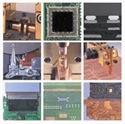SOLTEC was founded in 1965 by Marvin Solomon and operated as a private California Corporation for over 45 years until being acquired by NEC Avio Infrared Technologies Co., Ltd. (NEC Avio) on 01 January 2011 to become an NEC Group Company.
Effective 01 October 2012, NEC Avio Infrared Technologies Co., Ltd. (NEC Avio) was integrated with their parent company Nippon Avionics Co., Ltd. (an NEC Group Company) to expand overall production capability and enhance communication efficiencies. NEC Avio now operates under the AVIO name and brand.
AVIO is a manufacturer of high technology Thermal Imaging Cameras, Micro Joining Precision Welders (Resistance and Reflow) and Automated Seam Sealing Systems, and Data Acquisition Recorders. SOLTEC with headquarters located in in San Fernando, CA (Los Angeles area) offers AVIO’s entire line of products in addition to other ongoing products.
SOLTEC provides Sales, Customer Support, Product Service and Calibration for products sold within the North American market which includes the U.S.A., Canada, and Mexico.
SOLTEC has dedicated over 45 years to providing quality Data Acquisition and Recording Instruments & Systems. Today’s products are designed to serve modern technology Test & Measurement applications from R&D to Preventive/Predictive Maintenance.
SOLTEC’s products now include:
- AVIO (formerly NEC Avio Infrared Technologies Co.) High Performance Infrared Thermal Imaging Cameras and Systems for both handheld and fixed monitoring applications and the unique ability to record full Radiometric Thermal Images Synchronous with Analog Phenomena.
- Multi-channel, High Speed Data Acquisition Recorders and Strip Chart Recorders.
- STAHLE brand Vehicle Driving Robots for Vehicles, Motorcycles and ATVs; Transmission Shifters, Steering Systems for both dynamometer and autonomous testing applications.
- AVIO Micro Joining Resistance and Reflow Welders, Ultrasonic Welders, and Automated Seam Sealer and Lid Tacking Systems.
On behalf of ALL at SOLTEC, I thank our highly respected customers for their past support over our many years of industry service. We look forward to providing our customers new measurement and testing solutions and welcome inquiries as to which products best fit their application.
With sincere regards,Byron McIntire
President & CEO
SOLTEC, Inc.
an NEC Group Company




















